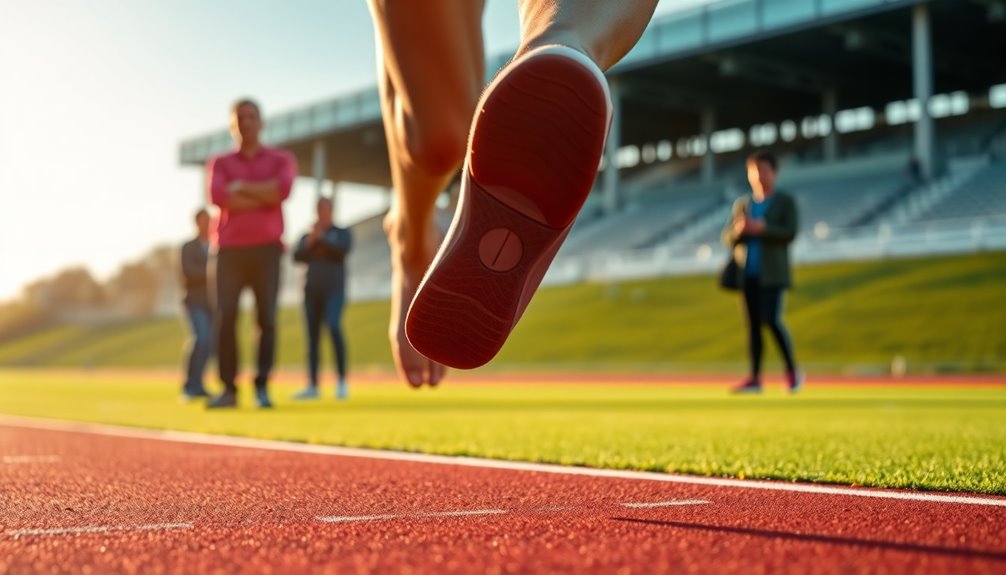Top sports labs are now obsessed with hip flexors because they play a vital role in your running efficiency. Strong hip flexors enhance your leg lift, stride length, and overall performance. Weakness in this area can lead to compensatory movements, reduced speed, and a higher risk of injuries. By focusing on strengthening hip flexors, you'll improve acceleration and decrease your injury risk. Curious about the best ways to incorporate this essential training into your routine?
Key Takeaways
- Sports labs are focusing on hip flexors due to their critical role in enhancing running efficiency and performance.
- Strengthening hip flexors improves leg lift and stride length, directly impacting running speed.
- Weak hip flexors lead to compensatory movements, increasing injury risk and decreasing performance.
- Targeted exercises for hip flexors can enhance flexibility and strength without causing fatigue.
- Prioritizing hip flexor training supports overall athletic development and prevents interruptions in training schedules.

When you think about running performance, you might focus on your legs or core, but the hip flexors often get overlooked despite their crucial role. These muscles are essential for leg lift and stride length, which directly impacts your running efficiency. If you're aiming to improve your sprinting speed, incorporating strength training for your hip flexors into your training regimen is vital. Research shows that a stronger hip flexor can enhance your sprinting mechanics, helping you accelerate and decelerate more effectively.
Weak hip flexors can lead to compensatory movement patterns that may decrease your overall running performance and increase your risk of common running-related injuries. You mightn't realize it, but neglecting this muscle group can be detrimental. It's no wonder that top sports labs are now focusing on this often-ignored area. Sports science has revealed that targeted hip flexor exercises can improve your running mechanics without causing significant fatigue, allowing you to train effectively without overexertion.
Incorporating both flexed and extended range of motion exercises for your hip flexors can optimize your running performance and aid in injury prevention. By prioritizing these exercises, you can enhance your strength and flexibility, which are crucial for maintaining proper leg mechanics during running. This focus on the hip flexors can lead to noticeable improvements in your speed and efficiency.
Many athletes experience injuries that stem from weak hip flexors, which can further exacerbate issues related to compensatory movement. By addressing this muscle group, you can significantly reduce your risk of these injuries, allowing you to train consistently and improve over time.
If you want to take your running performance to the next level, it's time to pay attention to your hip flexors. They may not be as glamorous as your core or legs, but they're the unsung heroes of your running journey.
A well-rounded training regimen that includes hip flexor strengthening can make all the difference in your performance on the track or trail. So, don't let this overlooked muscle group hold you back. Embrace the science, incorporate hip flexor exercises into your routine, and watch as your running efficiency and sprinting speed soar. You'll be glad you did!
Conclusion
Incorporating training for this overlooked running muscle can elevate your performance and reduce injury risk. As top sports labs emphasize its importance, you'll find that focusing on this muscle not only enhances your running efficiency but also adds balance to your overall workout routine. Don't let it remain in the shadows—prioritize it in your training plan, and you'll unlock new potential in every stride. Embrace this shift, and watch your running transform!








